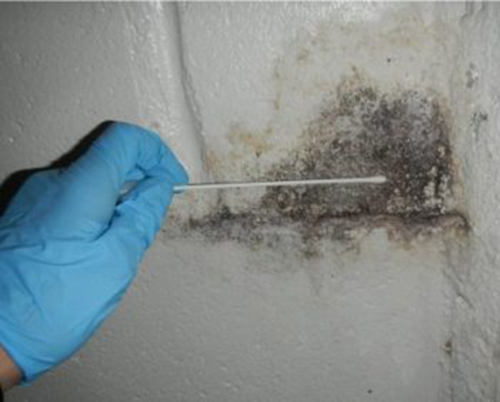Expert Tips for Message Mold Removal Success
In the realm of mold and mildew removal, efficiently getting rid of mold and mildew is just half the battle; the true challenge exists in stopping its reappearance. By sticking to expert tips and best practices, people can secure their spaces versus mold resurgence and keep a healthy and balanced indoor setting.
Monitor Humidity Degrees Routinely
After finishing mold and mildew removal procedures, preserving ideal moisture levels is important to protect against mold re-growth and guarantee a healthy and balanced interior environment. High humidity levels above 60% produce a helpful setting for mold to flourish, making routine keeping an eye on an aggressive measure to stop any type of future mold and mildew concerns.
In addition, establishing a regular schedule for moisture checks, specifically in high-risk locations such as basements, kitchens, and restrooms, is an aggressive technique to mold prevention. By consistently checking humidity degrees, home owners can successfully reduce the danger of mold reoccurrence and preserve a healthy and balanced indoor atmosphere post-remediation.
Conduct Thorough Inspections Post-Remediation
Following the completion of mold and mildew remediation treatments, it is crucial to conduct detailed inspections to confirm the effectiveness of the remediation procedure. These post-remediation evaluations are critical in guaranteeing that the mold and mildew concern has been efficiently dealt with which there is no reappearance or remaining mold development. Inspections ought to be performed by certified professionals who have experience in determining mold and analyzing interior air high quality.
Throughout these assessments, numerous approaches such as visual assessments, air sampling, and surface sampling may be employed to thoroughly evaluate the remediated areas. Visual assessments involve a detailed evaluation of the premises to check for any type of visible indications of mold development or water damage. Air tasting aids in figuring out the air-borne mold and mildew spore degrees, while surface area sampling can discover mold bits on surfaces.
Implement Proper Ventilation Strategies
After guaranteeing the performance of the mold remediation process via extensive inspections, the following critical action is to concentrate on executing correct ventilation methods. Adequate ventilation is crucial in stopping mold and mildew reoccurrence by controlling wetness degrees and promoting air flow.
Correct ventilation not only aids in protecting against mold growth however likewise adds to the overall health and comfort of passengers. By ensuring appropriate ventilation throughout the property, you can minimize the risk of mold and mildew regrowth and produce a healthier living atmosphere. Normal upkeep of air flow systems, consisting of cleansing and filter substitutes, is essential to sustaining efficient air flow. Consulting with a/c specialists can provide further insights remove mold on siding right into maximizing air flow methods for your details residential or commercial property needs.

Usage Mold-Resistant Materials for Repairs
To boost the long-lasting effectiveness of mold and mildew removal efforts, including mold-resistant materials for repair work is critical in reducing the risk of future mold and mildew development. Mold-resistant materials are made to stand up to dampness and hinder mold development, making them a vital choice for locations prone to wetness and humidity. When fixing locations impacted by mold and mildew, using products such as mold-resistant drywall, mold-resistant paints, and mold-resistant caulking can help protect against mold and mildew recurrence.
Mold-resistant drywall is an excellent option to standard drywall in locations like basements and restrooms where wetness degrees are greater. When revealed to damp problems, this kind of drywall has an unique coating that resists mold growth even. Additionally, using mold-resistant paints including antimicrobial agents can even more prevent mold development on walls and ceilings.
In areas where moisture prevails, such as restrooms and cooking areas, utilizing mold-resistant caulking around sinks, tubs, and windows can help seal out water and avoid mold from taking hold in splits and holes. By purchasing these mold-resistant materials during fixings post-remediation, you can dramatically lower the chance of future mold problems and maintain a much healthier indoor environment.
Maintain Sanitation and Address Water Issues
After mold remediation, it is vital to keep a tidy environment to avoid the regrowth of mold. Leaks, water invasion, or high moisture degrees can create the perfect breeding ground for mold, so it is critical to fix any water-related issues quickly.
To maintain cleanliness, consider using HEPA filters in vacuums and air purifiers to trap mold spores and prevent their circulation in the air. Making sure appropriate ventilation in areas prone to moisture buildup, such as bathrooms and cooking areas, can assist keep moisture degrees in check. By staying attentive regarding tidiness and dealing with water issues without delay, you can efficiently protect against mold and mildew reinfestation and keep a healthy and balanced indoor setting.
Verdict

In the realm of mold removal, efficiently eliminating mold and mildew is just half the fight; the true obstacle lies in avoiding its reappearance. After finishing mold and mildew removal treatments, keeping optimum humidity degrees is essential to avoid mold and mildew re-growth and guarantee a healthy indoor atmosphere. High moisture levels above 60% produce a favorable atmosphere for mold to prosper, making normal monitoring a proactive step to avoid any type of future mold and mildew concerns.
To improve the long-lasting performance of mold and mildew removal initiatives, including mold-resistant materials for repair services is vital in alleviating the danger of future mold and mildew growth. After mold and mildew removal, it is critical to preserve a clean environment to protect official statement against the regrowth of mold and mildew.